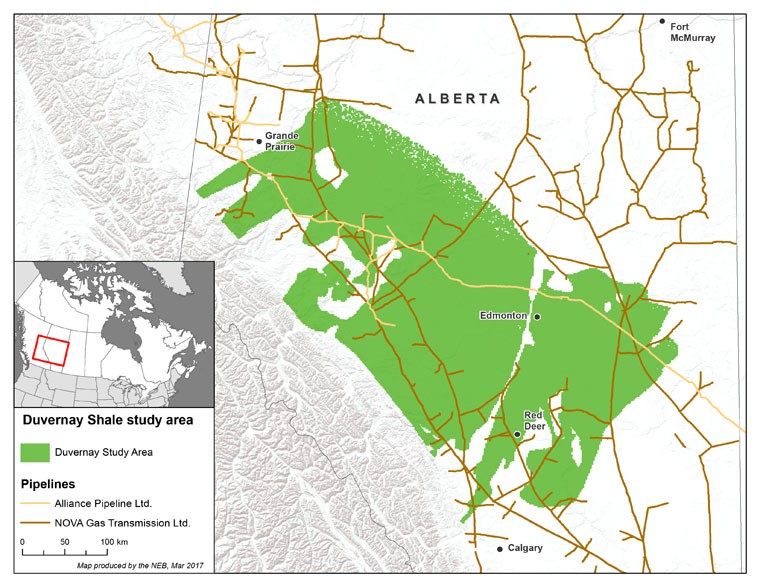Report: Canada's Duvernay Shale Contains 3.4 Billion Barrels of Light Oil

The National Energy Board (NEB), together with the Alberta Geological Survey (AGS), today released a new resource assessment for the Duvernay Shale in central Alberta that adds significant quantities of marketable light oil resources in the province as well as natural gas and natural gas liquids (NGLs).
Using geological and in-place hydrocarbon data provided by the AGS, the NEB estimates the Duvernay Shale contains 3.4 billion barrels of marketable light oil and field condensate, or 17 years of Alberta’s annual production. It also shows marketable gas resources equivalent to nearly 25 years of Canada’s annual consumption.
Deposited about 370 million years ago, the Duvernay Shale is rich in organic matter and ranges from about one kilometer to more than five kilometers deep. It covers nearly 20 percent of Alberta, stretching from just below Grande Prairie to just north of Calgary and east of Edmonton. Companies have been drilling the Duvernay Shale for shale gas and oil since 2011, and the region has extensive existing pipeline infrastructure.
Although most of current development has focused on the Duvernay Shale’s West Shale Basin, such as the Kaybob Field northwest of Edmonton, recent provincial land sales show increasing industry interest in the Duvernay Shale’s East Shale Basin.
A resource assessment of a formation’s marketable petroleum estimates the total amount of sales-quality oil, natural gas and even NGLs that can potentially be recovered from a formation with existing technology. Resource assessments are based on a number of factors such as the geology of the reservoir and production from existing wells.
The NEB will be releasing a second report later this fall examining the economics of the Duvernay Shale resource.
Related News
Related News

- Keystone Oil Pipeline Resumes Operations After Temporary Shutdown
- Biden Administration Buys Oil for Emergency Reserve Above Target Price
- Freeport LNG Plant Runs Near Zero Consumption for Fifth Day
- Enbridge to Invest $500 Million in Pipeline Assets, Including Expansion of 850-Mile Gray Oak Pipeline
- Williams Delays Louisiana Pipeline Project Amid Dispute with Competitor Energy Transfer
- Evacuation Technologies to Reduce Methane Releases During Pigging
- Editor’s Notebook: Nord Stream’s $20 Billion Question
- Enbridge Receives Approval to Begin Service on Louisiana Venice Gas Pipeline Project
- Mexico Seizes Air Liquide's Hydrogen Plant at Pemex Refinery
- Russian LNG Unfazed By U.S. Sanctions




Comments